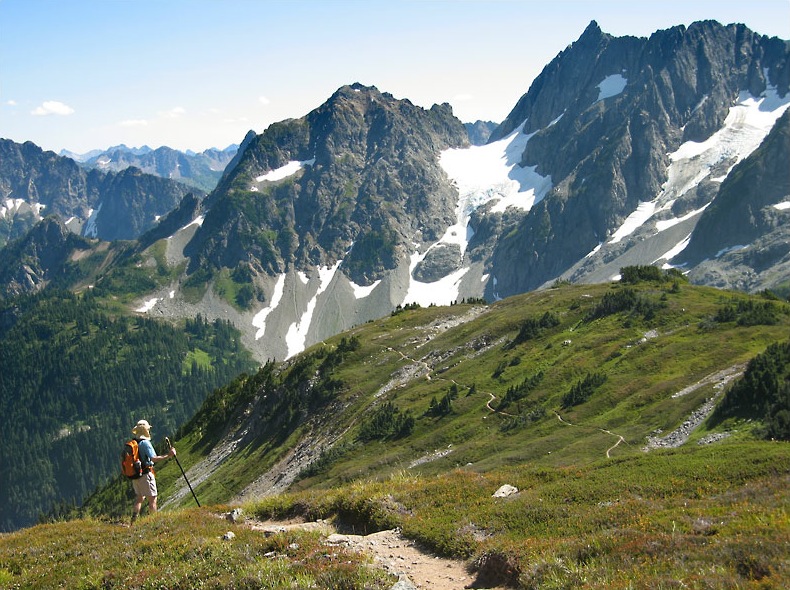Katie and I did another PCT training hike last week. This time we took our backpacks and gear for an overnight and "gear shakedown" to see if everything was performing like it was supposed to. Since Portland's perfect March weather disappeared and it has been cold and rainy lately (seriously... what happened to those 70 degree sunny days we had a few weeks ago?!) we decided to head out of the valley and into the high desert.
Ironically, we decided on a backpack that Tanner and I did almost exactly a year ago, to the Deschutes River. I like it because it's long, flat, and sunny, best hiked in the early season before it gets too hot. It's also a great place to pound out some serious mileage, which was our goal this trip.
We headed out early, witnessing the amazing night-and-day transformation between the rainy, dark Columbia Gorge and the clear, sunny skies of the high desert. The abrupt change as you drive past the mountain range makes me think of those old cartoons where Wiley Coyote is running away from that single rain cloud. You could practically see the line in the ground where the weather changes.
We hiked fifteen miles in, going at a good pace of 3 miles/hour. My base pack weight came in around 15 pounds (minus food and water) but since I have to get used to packing in lots of water in the desert, I brought about 6 liters and that upped my pack weight closer to 30 pounds. Still, I was in good spirits, trying out a new lighter weight pack and new trail running shoes. Apparently the thru-hike trend the past few years has shifted from the traditional ankle-height backpacking boots to a lighter, meshier trail running shoe. The most popular on the PCT is the Brooks Cascadia.
At mile ten my feet were getting weary, and by mile fifteen it was a welcome rest to find a camp spot beside the river and set up the tent. My feet were doing okay, but the tops of my toenails felt tender and bruised, like they had been slamming into the tops of my shoes all day. It was my first time hiking in something other than boots, so it was an interesting change of pace to be carrying so much weight on a lighter shoe.
We cooked dinner and had a pack of MnMs each for dessert (the packages claimed they were "sharable size" bags, but we downed the whole thing - the best part of long-mileage hiking is the ability to eat a 400 calorie bag of chocolate without blinking an eye, right?) then settled down for the night.
The next morning we hiked back out the fifteen miles. My toenails were feeling better, but by the end of the hike my feet themselves were feeling bruised and battered on the bottoms. The last few miles got pretty painful and my pace slowed down a good bit. By the time we got home again, I was hobbling around the house and trying to soak my sore muscles. Two days in my compression socks made me feel much better, but I may have to review my gear choices again before setting out on another long-distance hike.
Either way, it was a beautiful day for a hike and I'm getting excited about our upcoming adventure.




























